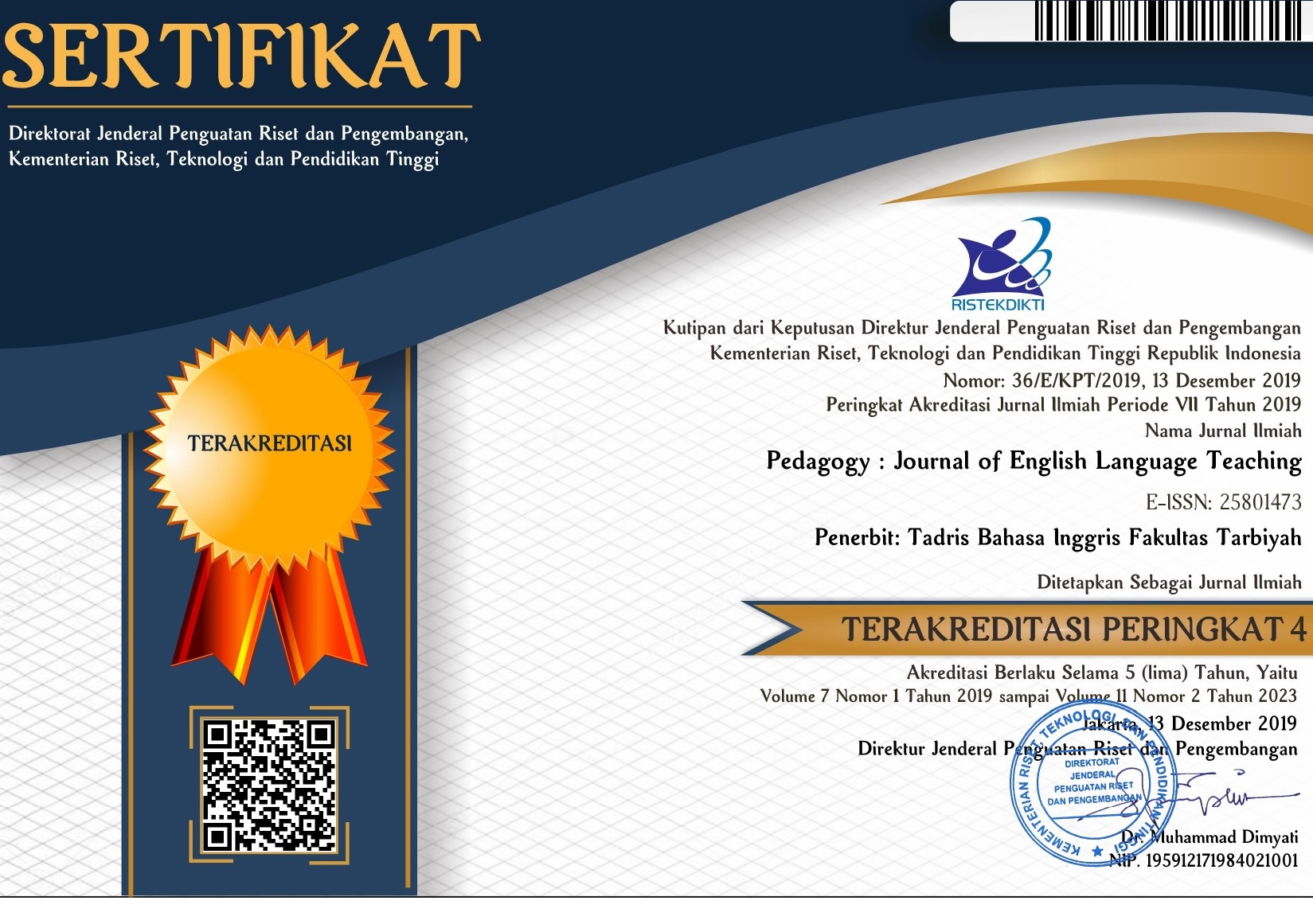A SYNTACTICAL INTERFERENCE FOUND IN EFL STUDENTS’ ENGLISH COMPOSITION
DOI:
https://doi.org/10.32332/pedagogy.v5i2.936Keywords:
first language interference, EFL students, English compositionAbstract
The purpose of this study is to analyze syntactical interference found in EFL Students’ English composition of IAIN Salatiga. The objectives are to find out type of interference, frequency of each type, the most dominant type, and the factors contribute to language interference in EFL students’ composition. This is a descriptive-qualitative research. The data were taken through elicitation technique, and then analyzed by using theory of language interference. The findings of this study showed that EFL students made five categories of interference error that belong to syntactical interference: the use of L1 structure in target language, the use of L1 structure in English noun phrase, literal translation in negation of verbal sentence, literal translation in negation of nominal sentence, and literal translation in nominal sentence of affirmative form.
References
Downloads
Published
Issue
Section
License
Copyright (c) 2025 Ahmad Samingan

This work is licensed under a Creative Commons Attribution-ShareAlike 4.0 International License.















